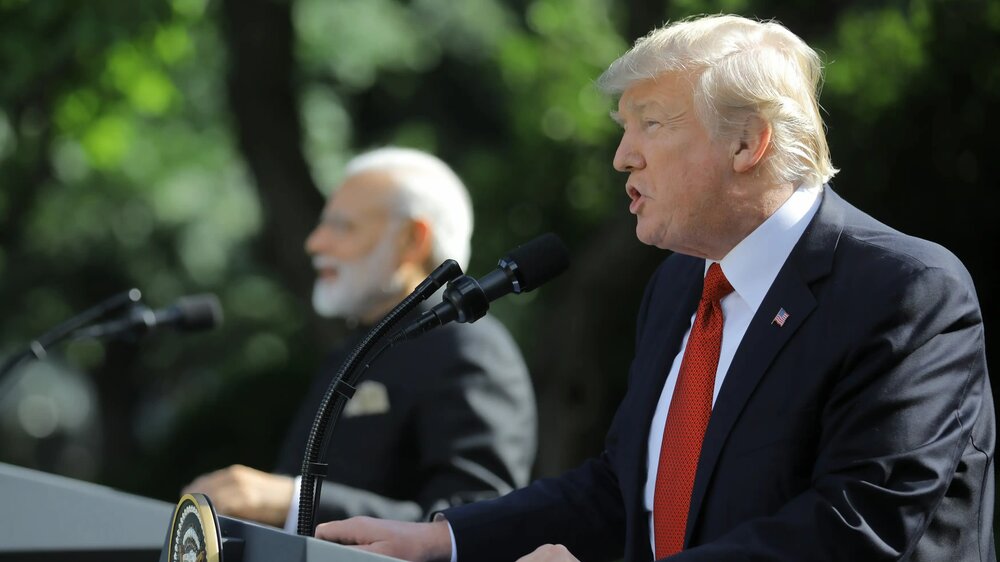Trump’s next trade war with India; India’s preferential trade status ended

TEHRAN - It is official: U.S. President Donald Trump’s next trade war is going to be with India, and his decision to end India’s preferential trade status bears testimony to that.
The decision comes at a sensitive time with Narendra Modi-led government in India bracing up for the general election in May and the opposition mounting attacks on the nationalist government.
Trump administration has announced its plans to strip India of a preferential trade status which had allowed it to export many goods to the U.S. free of tariff.
“India is a very high tariff nation. They charge us a lot,” Trump said this week. “When we send a motorcycle to India, it’s a 100 per cent tariff. They charge 100 per cent. When India sends a motorcycle to us, we brilliantly charge them nothing.”
Experts believe that if the trade tensions between the two countries escalate, India will respond with retaliatory tariffs, making it hard for the U.S. companies doing business in India.
While U.S. carries its ninth largest trade deficit with India, the country is still seen as an important growth market for powerful U.S. companies like Apple, Netflix, Facebook, among others, especially as China’s economy slows down, said a report in CNBC.
Over the past couple of months, the report added, U.S. and Indian officials discussed ways to level the trade imbalance, but New Delhi was not willing to budge, pushing the U.S. to respond with the GSP withdrawal.
“India has implemented a wide array of trade barriers that create serious negative effects on United States commerce. Despite intensive engagement, India has failed to take the necessary steps to meet the GSP criterion,” U.S. trade representative Robert Lighthizer said in a press statement.
Blake said the trade tensions have been building over time so GSP announcement was not a big surprise for India.
Under its GSP status, India in 2017 exported over $5.5 billion of goods to the U.S. without tariff. In the fall of 2018, India announced tariffs on $240 million of U.S. goods, but did not follow up on it.
“India is not threatening retaliation immediately. But if they do, it will be the U.S. consumer that the added cost will be passed on to,” Pravin Krishna, professor at Johns Hopkins University, was quoted as saying by Financial Times.
In February this year, India imposed new rules that challenge Walmart’s FlipKart and Amazon’s aggressive drive into India, which according to analysts was aimed at protecting small businesses.
Chuck Grassley of Iowa, chairman of the U.S. Senate finance committee, backed the move.
“The Indian government hasn’t engaged enough to address market access issues. For the sake of the many Americans and Indians who relied on GSP benefits, I hope that India will work to quickly address these legitimate concerns,” he was quoted as saying.
Trade tensions between Washington and New Delhi have increased over the past one year with the Indian government announcing a range of tariff and regulatory policies hurting U.S. businesses.
U.S. government started the review of India’s preferential trade privileges in April 2018, complaining that New Delhi had not sufficiently opened up its market to justify duty-free access to the U.S. market.
In a letter to the U.S. Congress, Trump accused India of shutting out American businesses.
“I am taking this step because, after intensive engagement between the United States and the Government of India, I have determined that India has not assured the United States that it will provide equitable and reasonable access to the markets of India,” he said in the letter.
Leave a Comment